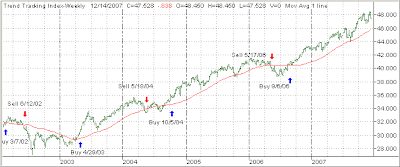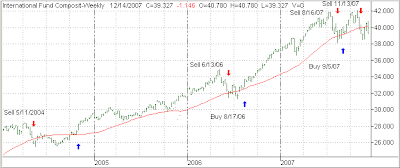 Last week’s PPI and CPI reports, along with the Fed’s lowering of interest rates, have pushed the question to the front burner again as to whether inflation will be heating up further, or if it’s just a temporary phenomenon.
Last week’s PPI and CPI reports, along with the Fed’s lowering of interest rates, have pushed the question to the front burner again as to whether inflation will be heating up further, or if it’s just a temporary phenomenon.
From my non-economist view, I find it hard to believe that inflation numbers will worsen given the fact that banks and other financial service companies are writing down huge debt and real estate prices are falling. Those are deflationary signs unless we were to return to the stagflation times of the 70s where both, inflation and deflation, were a problem.
Minyan’s mailbag addressed this important issue in more detail with a Q & A session titled “Deflation, The Fed And Control.”
Here is a snippet:
Your statement assumes that in fact the Fed is “’in control’’ here which is manifestly is not. The idea that the Fed directly controls the creation and destruction of credit is termed the potent director’s fallacy.
While the Fed certainly does intervene in the market for capital (by adjusting its cost) its effects are largely a function of the prevailing appetite for risk. Where providers (banks) and users (consumers, corporations, investors) of capital (read: credit) are risk seeking like they have been since 2001-2002, the Fed’s easy money policies have a multiplier effect through the economy and financial markets.
We have seen this writ large in tech in 2000, housing in 2005-2006, and credit securitization up until August 2007. But when those collective appetites go from risk seeking to risk averting, there is simply nothing the Fed (or administration) can do to stop the process of asset renormalization (which is a fancy term for write-downs). In the US, the economist Nouriel Roubini has been steadfast in his assessment that an insolvency crisis (which is most definitely what we are facing here) cannot be cured with lower Fed Funds rates. I couldn’t agree more. What cures a deflation is marking down the previously high valued assets to their new (much lower) market-determined price. Certain ABX indices trade at 20 cents on the dollar – an 80% decline for assets that traded at nearly par early in 2007.
What the above suggests is that we are in a deflation now. The write downs you see by Citigroup (C), HSBC (HBC), Washington Mutual (WM) et. al plus the 30%+ decline in asset back commercial paper volume since August 1 is in fact a deflation of the most serious kind. What you have not yet seen en masse is this credit deflation rolling downhill into the regular economy – into CPI, into PPI, into wages. Having such a massive – unprecedented – destruction of credit that we have seen worldwide not make its way from the financial economy to the ‘regular’ economy would be unprecedented in any cycle in any country at anytime in the modern financial era.
Only time will tell how this scenario will play out, but how do you cure a deflation if in fact it happens? Minyanville’s answer is “what cures a deflation is marking down the previously high valued assets to their new (much lower) market-determined price.” Once that cycle has passed, I guess, we will back to inflating ourselves to prosperity again.






